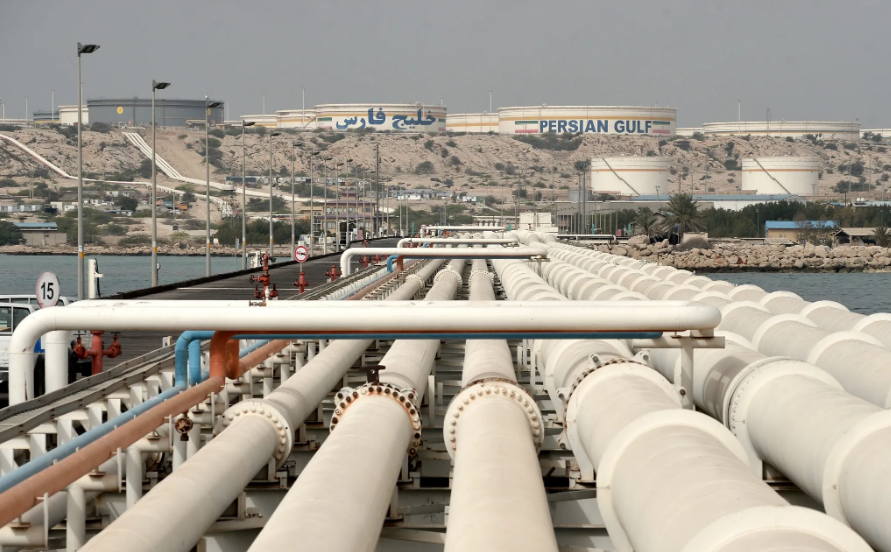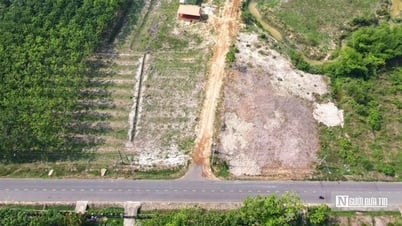Global crude oil prices rose more than 4% on October 3 after President Joe Biden told reporters he was discussing whether the US should support Israel in an attack on Iranian oil facilities.
“We’re discussing it,” Biden told reporters on October 3. “I think it would be a little… anyway.”
The US leader’s cryptic comments sent oil prices soaring – but not enough to send the commodity soaring. The global benchmark Brent crude closed at $77.62 a barrel, still below the level it reached during most of 2024.
Abundant reserves
“In the past, if we were talking about any kind of conflict in the Middle East involving Iran, oil prices would probably go above $100 a barrel,” said Amrita Sen, founder of energy research firm Energy Aspects.
"We've also talked about $120 a barrel, or $130 a barrel. What's surprising is that this time, even though tensions between Israel and Iran are as severe as they have been in decades, the market seems to have completely ignored this."
Why is the market so bullish? Traders say the world has plenty of oil to spare. And analysts say the biggest reason for optimism is that the OPEC+ alliance can pump even more oil — if it wants to.

President Joe Biden told reporters he was discussing whether the US should support an Israeli attack on Iranian oil facilities. Photo: Getty Images
As a group, OPEC+, a coalition of oil-producing countries, has an incentive to produce less oil; lower supplies mean higher prices. But individual member countries have reasons to produce more oil, as it helps fund their national budgets. Balancing the two is the core diplomatic challenge of the OPEC+ alliance.
Over the past few years, the group – and Saudi Arabia in particular – has cut production significantly to try to keep prices up. That means OPEC+ could, in theory, easily make up for any lost Iranian oil.
Rystad Energy, an energy research firm, estimates that Iran produces about 4 million barrels of crude oil a day and exports about 2 million barrels. OPEC+’s spare capacity—the amount of oil the group could produce but is choosing not to—“is currently at over 5 million barrels a day, which could be deployed relatively quickly,” Claudio Galimberti, Rystad Energy’s chief economist , said in a research note.
Whether the alliance chooses to deploy that output is another question.
Rebecca Babin, a senior energy trader at CIBC Private Wealth, noted that OPEC+ kept production unchanged even after Russia launched a military campaign in Ukraine, sending oil prices soaring at the time. She said it was likely they would opt for an increase this time.
“Did we know they were going to do this? Of course not,” said Babin. “And they like to surprise. But the fact that they are choosing to increase production is helping to keep oil prices from going sky high.”
Geopolitical changes
There are also other reasons why oil prices may not spike. In fact, oil prices fell sharply in September, partly due to weaker-than-expected demand from the Chinese economy. Beijing has just launched a major economic stimulus program, but it is unclear how much of that will translate into oil consumption.
Meanwhile, the geopolitics of oil have changed dramatically, largely due to the shale boom, as new drilling methods such as shale fracking have tapped into vast reserves. The United States is now the largest oil producer in history and a net exporter of oil.
And because the US is much less dependent on oil from the Middle East than it once was, traders say Iran has less incentive to close the Strait of Hormuz than it did a few decades ago.
More than a quarter of the world’s seaborne crude oil passes through the waterway, which lies between Iran and the United Arab Emirates. Any blockage in the area would send oil prices soaring, said Rystad Energy’s Galimberti.
But that would be less painful for America than it was before — and more painful for Iran and its main customer, China.

Iran's Kharg oil facility tops the list of targets Israel would surely want to hit in any retaliatory strike. Photo: Anadolu
Energy Aspects' Ms. Sen said the market is currently underestimating how much an Iran-Israel conflict could disrupt the market, and that if an attack on oil infrastructure did occur, the price reaction would be dramatic.
On the ground, Iranian oil tankers have left Kharg Island in anticipation of a potential Israeli attack in response to the massive missile barrage Iran launched on October 1. The island, which handles 90 percent of Iran’s oil exports, is believed to be a prime target for Israeli retaliation.
"The National Iranian Tanker Company (NITC) appears to be fearing an imminent Israeli attack," TankerTrackers reported on Twitter on the afternoon of October 3. "Their empty VLCCs left the country's largest oil port, Kharg Island, yesterday (October 2)."
The facility, located about 20 miles (32 kilometers) west of Iran in the northern Persian Gulf, is still loading ships, TankerTrackers noted. However, “all available shipping capacity has been removed from the Kharg Island moorings. This is the first time we have seen something like this happen since the 2018 round of sanctions.”
Media outlet HunterBrook analyzed 105 satellite images of Iranian tankers dating back to November "showing that this was the first time all the tankers had left their anchorages."
Minh Duc (According to NPR, TWZ)
Source: https://www.nguoiduatin.vn/cang-thang-israel-iran-co-du-de-khien-gia-dau-tang-boc-dau-20424100411310694.htm


![[Photo] Prime Minister Pham Minh Chinh attends the event "Digital transformation of the banking industry by 2025"](https://vphoto.vietnam.vn/thumb/1200x675/vietnam/resource/IMAGE/2025/5/29/0e34cc7261d74e26b7f87cadff763eae)
![[Photo] Journalists moved to tears at the Memorial Service for the soldiers who died in Gac Ma](https://vphoto.vietnam.vn/thumb/1200x675/vietnam/resource/IMAGE/2025/5/30/9454613a55c54c16bf8c0efa51883456)



![[Photo] A delegation of 100 journalists from the Vietnam Journalists Association visits the soldiers and people of Truong Sa island district.](https://vphoto.vietnam.vn/thumb/1200x675/vietnam/resource/IMAGE/2025/5/30/0984a986227d4e988177f560d2e1563e)































































































Comment (0)